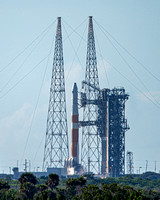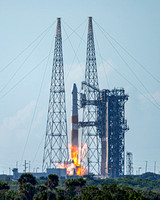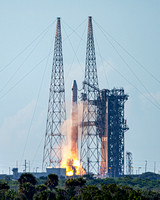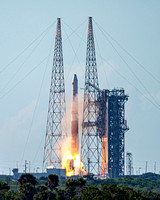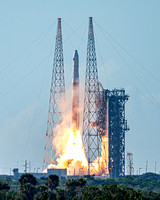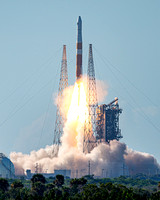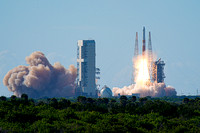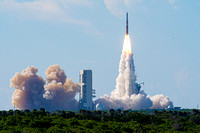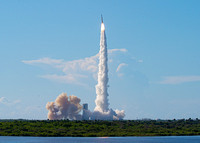Created 22-Aug-19
Modified 13-Dec-23
Excerpts from Spaceflightnow.com:
The last Delta 4 launcher to fly in a single-core configuration rumbled into space Thursday morning from Cape Canaveral with a GPS navigation satellite, leaving United Launch Alliance with five more Delta 4-Heavy missions on contract through late 2023 before the Delta rocket family retires from service.
ULA’s final mission using a Delta 4-Medium rocket, which is powered by a single first stage booster core, lifted off at 9:06 a.m. EDT (1306 GMT) Thursday from Cape Canaveral’s Complex 37 launch pad.
The core stage’s RS-68A main engine, made by Aerojet Rocketdyne, ignited in a ball of fire five seconds before liftoff and throttled up for a computer-controlled health check. Moments later, twin Northrop Grumman-built solid rocket motors flashed to life and three swing arms quickly moved out of the way as the 207-foot-tall (63-meter) Delta 4 climbed away from pad 37 and headed northeast over the Atlantic Ocean with more than 1.2 million pounds of thrust.
Less than two hours later, after a pair of on-target burns by the Delta 4’s second stage RL10 engine, the launcher deployed the U.S. Air Force’s 8,170-pound (3,705-kilogram) GPS 3 SV02 spacecraft into an elliptical transfer orbit stretching more than 12,500 miles (nearly 20,200 kilometers) above Earth.
With the successful conclusion of Thursday’s mission, the Delta 4-Medium rocket family retired with an unblemished record over 29 launches since the first Delta 4 flight Nov. 20, 2002.
ULA is phasing out the Delta 4-Medium as the company faces stiff competition from SpaceX for U.S. military launch contracts. The new Vulcan Centaur rocket, set for an inaugural launch in 2021, will be less expensive than than the Atlas and Delta rockets it will replace, according to ULA.
Photos taken from LC-39 Observation Gantry - a distance of 5.5 miles.
© Dennis Huff


